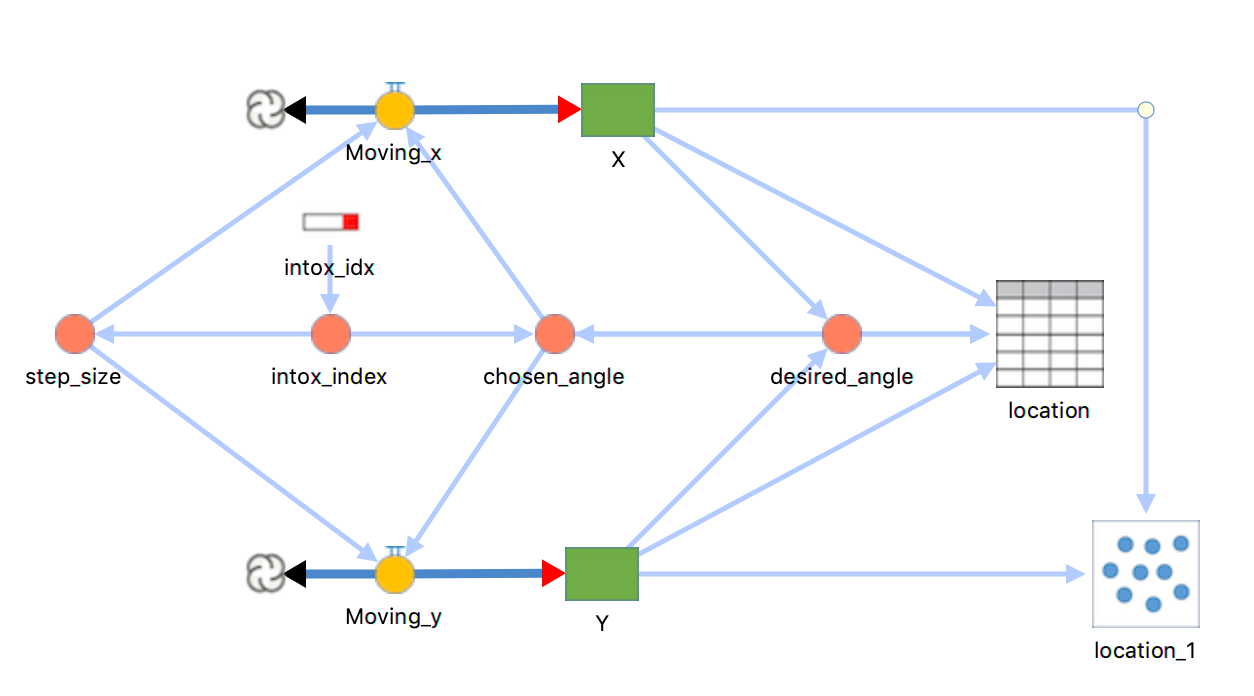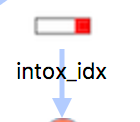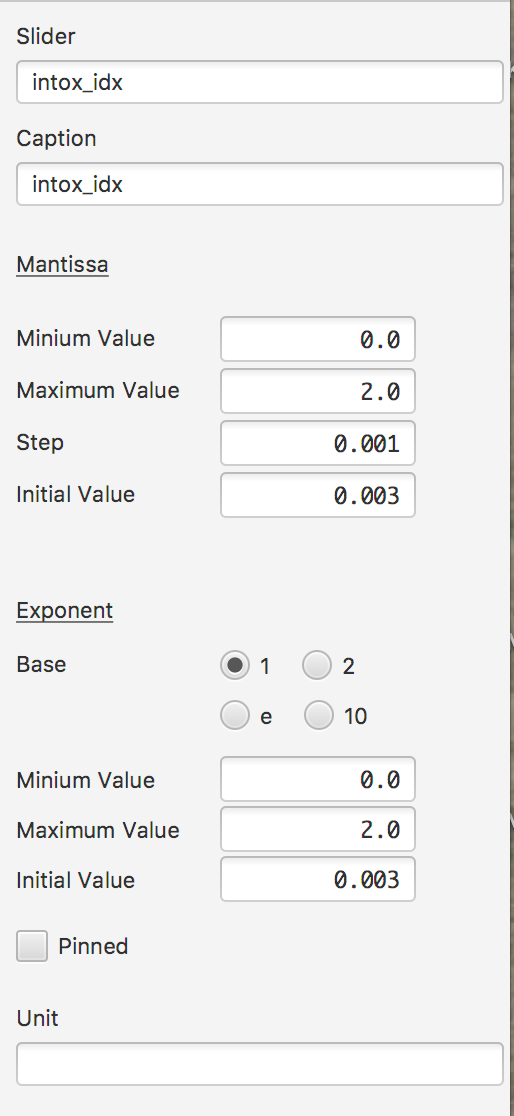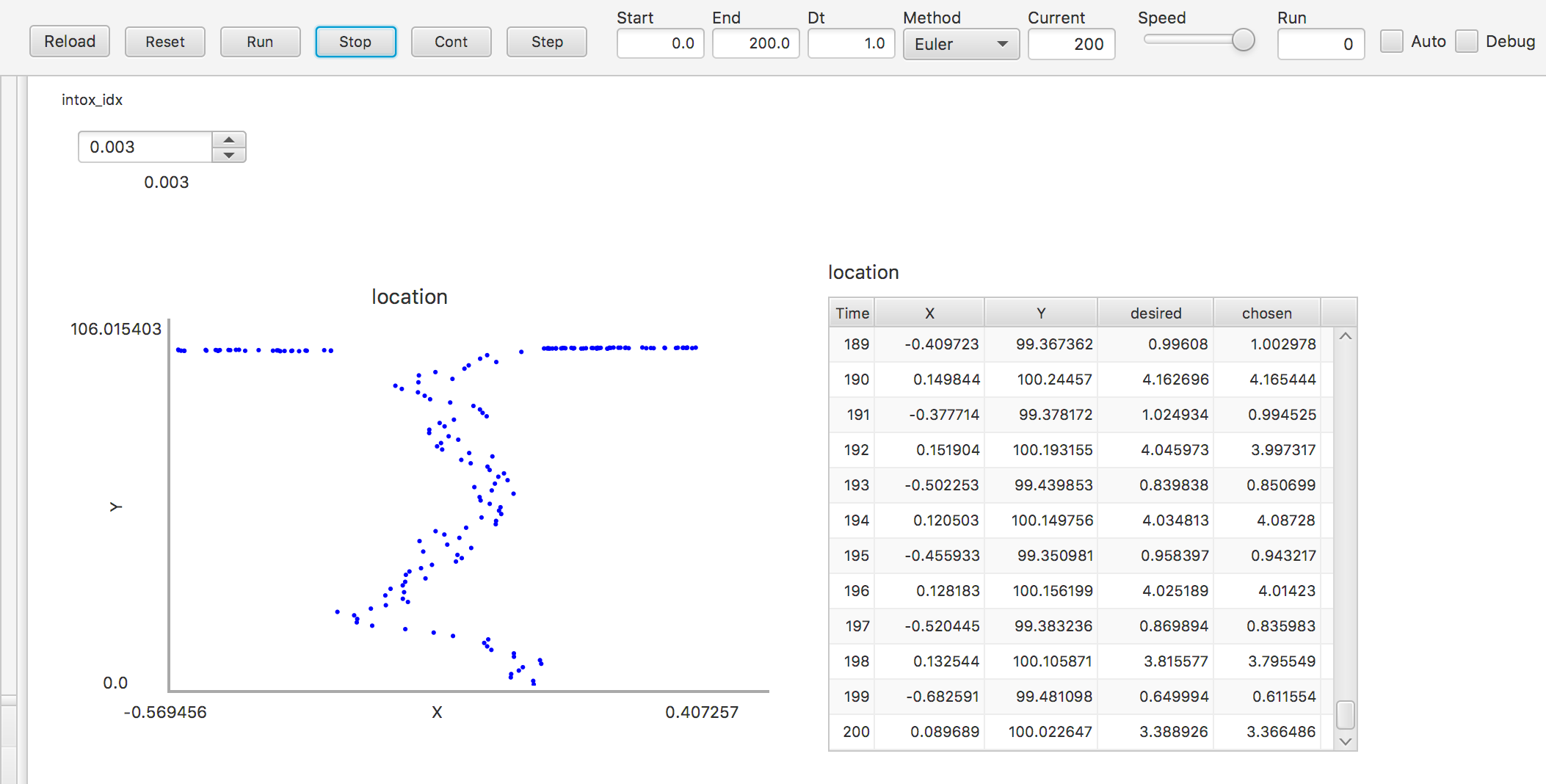DRUNKEN RANDOM WALK MODEL
A moderately complicated system dynamics model.
*From “Intoxication Model” (Fig. 5.3) Dynamic Modeling by Bruce Hannon & Matthias Ruth.
THE MODEL

Below, we observe the Drunken Walk model and its moving parts.
Our newest Component is the Spinner, located at “Displays & Controls >> Spinner.” A Spinner is a visual control that allows you to change the value of a
parameter in your model using the mouse. Unlike a Slider, which is similar but limited to changing values along a linear scale, a Spinner has the ability to also change
values using Scientific Notation. The Spinner in this particular model is shown here:

When you add a Spinner, two objects will appear – an icon for the Spinner on the model canvas, and the Spinner control on the dashboard. These two visual elements
represent the same Spinner – changing the properties of one changes the properties of the other. You can have multiple Spinners on a model, as long as each one is
given a unique name. You don’t need to manually connect Spinners to other objects to use them in expressions. Similar to Sliders, Spinners “broadcast” their value
wirelessly to all objects in the model.

AGAIN, THE MODEL

MODEL LAUNCH

